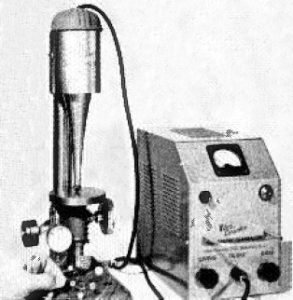
Have you heard of ultrasonic machining? Also known as ultrasonic vibration machining, it’s a manufacturing process that’s used to remove material from a workpiece through the use of high-frequency vibrations combined with particles. An ultrasonic tool essentially creates many small vibrations that, over time, remove material from the workpiece with which it’s used. To learn more about ultrasonic machining and how it works, keep reading.
Overview of Ultrasonic Machining
With ultrasonic machining, a tool creates vibrations that projects micro-sized particles towards the workpiece. The particles are typically mixed with water or other liquids to create a slurry. When the ultrasonic tool is activated, it projects these particles at a fast rate of speed towards the workpiece’s surface. The abrasive nature of the particles helps to grind away material from the workpiece’s surface.
Advantages of Ultrasonic Machining
There are dozens of other manufacturing processes capable of removing material from workpieces, their applications are typically restricted to workpieces made of strong and durable materials. Ultrasonic machining is unique, however, because it’s capable of removing material from nearly all types of workpieces, including those made of hard and brittle materials. Whether a workpiece is made of glass, ceramic or even quartz, its physical dimensions can be altered using ultrasonic machining.
Ultrasonic machining doesn’t require heating workpieces. If a workpiece is sensitive to thermal fluctuates, it can be safely altered using this machining process. During ultrasonic machining, the workpiece’s temperature will remain the same. In other words, the process requires neither heating nor cooling the workpiece.
Furthermore, ultrasonic machining offers higher tolerance than many other machining processes. It’s capable of modifying workpieces with high tolerances that isn’t possible with other machining processes.
Disadvantages of Ultrasonic Machining
On the other hand, there are a few disadvantages of ultrasonic machining, one of which is a slower-than-average rate of material removal. It’s not a particularly fast way to remove material from workpieces. On the contrary, it’s slower than most other machining processes. For manufacturing companies looking for mass-production processes, ultrasonic machining may be a poor choice.
In addition to a slower-than-average rate of material removal, ultrasonic machining doesn’t support the use of deep holes. It’s not uncommon for manufacturing companies to drill holes into workpieces before exposing them to an ultrasonic machining tool. If a hole is too deep, however, the slurry won’t be able to fill it.
